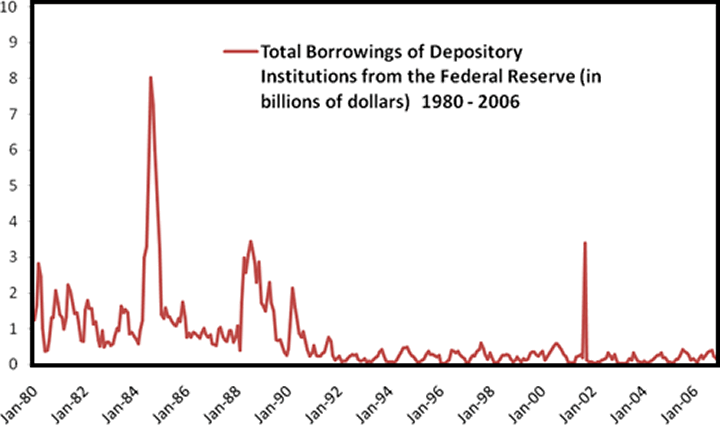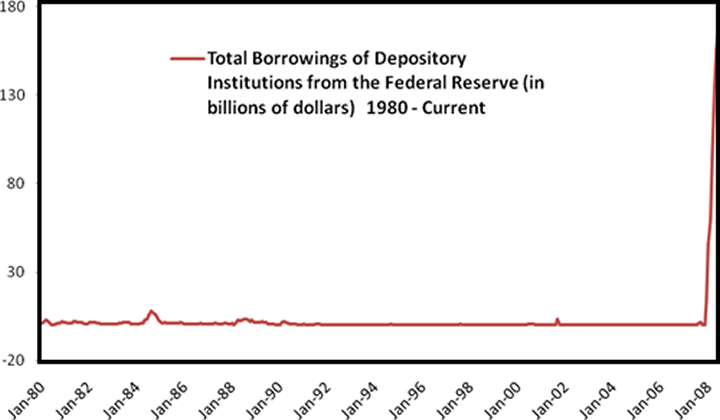Ben Bernanke has Become the Destroyer of Worlds
Currencies / US Dollar Jul 19, 2008 - 08:20 AM GMT Jack Crooks writes: I love readers' comments at the end of online articles and blog entries. I recently came across one at the end of an article regarding general Federal Reserve policy that simply said:
Jack Crooks writes: I love readers' comments at the end of online articles and blog entries. I recently came across one at the end of an article regarding general Federal Reserve policy that simply said:
"Ben Bernanke is like the death star. Destroyer of worlds."
For those of you not up on movie trivia, the comment is referencing Star Wars . In the film, the bad guys build a manmade space station meant to destroy an entire planet in a single attack.
And while Bernanke's official job description isn't destroying planets, some might argue that he's at least destroying the U.S. economy.
That opinion may have gained greater support this week after Bernanke's two days of Congressional testimony.
Accompanied by Treasury Secretary Henry Paulson and SEC Chairman Christopher Cox, Big Ben paid lip service to the panel of Congressmen bombarding him with questions. While Bernanke gave the normal reassurances about the state of the economy and inflation, the subject of giving the Fed additional regulatory responsibilities made for a heated discussion.
The best quote came from Senator Jim Bunning. When it was his turn to address the Fed Chairman, he noted, "The Fed is the systemic risk."
Both that reader comment and the Congressional testimony point to the same thing ...
People Are Sick and Tired of the Fed's Decision To Fight Economic Fire with Molotov Cocktails!
Almost any economist will tell you that every boom period is followed by a bust period. And typically, the larger the boom, the larger the bust.
But it seems like lately the Federal Reserve is disregarding the historical boom-bust cycle, doing everything in (and beyond) its power to keep the good times rolling.
Sounds nice, but there comes a point when the economic system needs to cleanse itself. Hence the subsequent bust to every boom. Excesses need to be worked off; idle capital goods need to be redistributed or repurposed; the fat needs to be trimmed.
By making every effort to sustain the boom when it's already naturally run its course only delays the inevitable; the impending bust will feel all the more painful. Think about fighting fire with Molotov Cocktails.
Many analysts, including myself, are beginning to believe the Fed needs to stop fighting the fire with bailouts and cheap money. Instead, they need to tighten up and let the market process work things out from here.
Right now, the Fed is no doubt in bailout mode. Just look at the obvious Bear Stearns backstop a couple months ago and now the Fannie/Freddie fiasco. And who knows how many other firms the Fed has saved — so far — by opening up the vault doors to nearly everyone.
Have a look at the following set of charts. This first one shows the total borrowings of depository institutions (banks) from the Federal Reserve from 1980 until 2006:

You can see a major spike to roughly eight billion dollars of borrowing in 1984, likely due to the economy's recovery from recession in years prior.
This spike in total borrowings was also coupled with a brief surge of inflation (of similar proportions to what we're experiencing today) after Fed Chairman Paul Volcker brought the inflation rate down from 13.5% in 1980 to as low as 3.2% in 1983.
Now, this next chart shows the exact same series of data, only this time I've included up through June of 2008 ...

As you can see, the period up through June 2008 completely dwarfs the amount of borrowings in any period before it. In fact, it makes all other periods look like a flat line!
The spike to more than $170 billion dollars of borrowings reflects the newly created auction facilities.
What This Means for the U.S. Dollar ...
Bernanke recently admitted that the U.S. dollar needed to work off some of the excesses from the rally that began in the mid 1990s. That's part of why the bear market has extended so deep for the buck.
The dollar has done that — and more .
But the charts I just showed you prove that the dollar is not nearly out of the woods yet.
Basically, if the Fed doesn't change its attitude and stop feeding debt creation, asset prices will spiral higher, and more pain will be crammed into the closet until someone or something knocks the door open.
Bottom line: The buck is ready to fight back — if and when the Fed realizes they need to HIKE interest rates just as they did in 1984 when they had another inflation scare after bringing rates down too soon.
And, oh yeah, I hear it every day — "It's an election year and the Fed couldn't possibly use interest rate hikes to teach some lessons."
I say they could, and should . I say we stop giving politicians a free pass, and start making them earn our votes.
Best wishes,
Jack
This investment news is brought to you by Money and Markets . Money and Markets is a free daily investment newsletter from Martin D. Weiss and Weiss Research analysts offering the latest investing news and financial insights for the stock market, including tips and advice on investing in gold, energy and oil. Dr. Weiss is a leader in the fields of investing, interest rates, financial safety and economic forecasting. To view archives or subscribe, visit http://www.moneyandmarkets.com .
Money and Markets Archive |
© 2005-2022 http://www.MarketOracle.co.uk - The Market Oracle is a FREE Daily Financial Markets Analysis & Forecasting online publication.
Comments
|
Anonymous
01 Aug 08, 12:20 |
Misconceptions
A better explanation: Non-Borrowed Reserves: False Alarm A number of people on Wall Street have noticed a recent plunge in non-borrowed reserves in the banking system and wondered it is a sign of distress in the banking system or of unusually stringent monetary policy. They dropped from $42 billion last November to negative $2 billion at the end of January. It’s probably a false alarm, though. The drop is purely technical, a function of how the Fed has chosen to classify the money lent through its new Term Auction Facility. Some background. All banks are required to hold some reserves in the form of either cash on deposit at the Fed or currency in their vaults. The Fed manages interest rates by increasing or decreasing these reserves. The Fed ordinarily does this through open market operations: It buys, usually temporarily, Treasury bonds and bills from dealers, and the funds get deposited in the dealers’ bank accounts at the Fed. That causes reserves to go up. Banks usually lend out anything in excess of their requirements, putting downward pressure on the federal-funds rate. Banks also obtain reserves by borrowing at the discount window, which often occurs if they fall short of their regulatory requirement. According to economic theory, the Fed can target either the price (interest rate) or the quantity of reserves, but not both. Back when the Fed hated to admit it controlled interest rates, it targeted reserves. Since the amount banks borrowed from the discount window was somewhat beyond their control, they focused on reserves minus discount window borrowings, or “non-borrowed reserves.” In 1990, the Fed began to explicitly target the federal funds rate in one of its most important and least appreciated moves towards greater transparency. Since discount window loans were usually pretty small, total reserves and non-borrowed reserves were pretty close............. http://blogs.wsj.com/economics/2008/02/08/non-borrowed-reserves-false-alarm/trackback/ |



